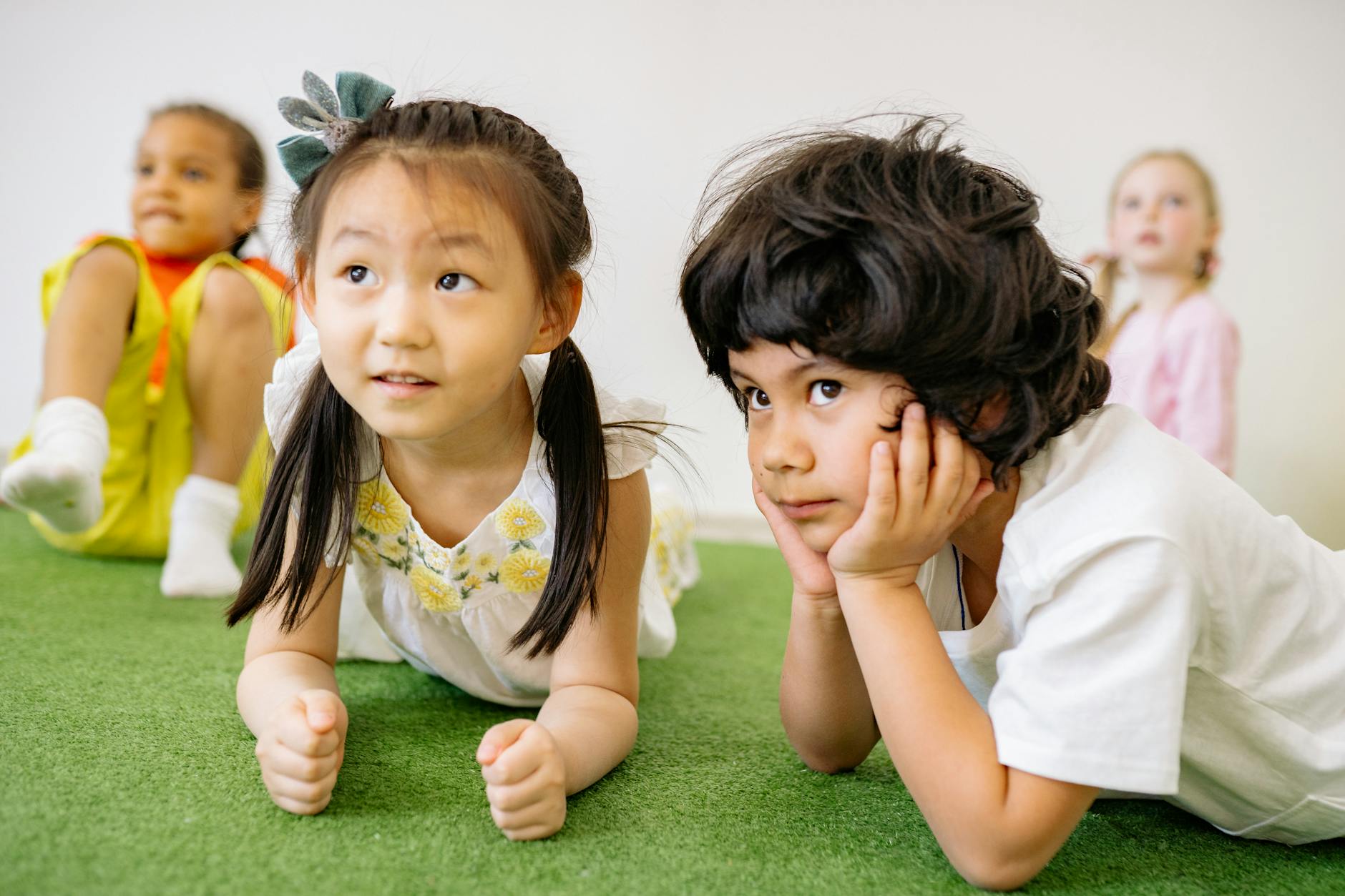Can Team-Building Activities Transform Workplace Dynamics in the United States?

Introduction to Team-Building Activities
As an expert organisational strategist, I've seen how team-building activities can transform workplaces, especially for professionals in technology. These activities foster creativity, enhance camaraderie, and ignite synergy within teams. For instance, whether your team attends a paint and sip NYC event or dives into pottery classes NYC, these experiences can significantly boost morale and collaboration.
Types of Activities
Team-building activities can be categorised into several types:
- Creative Workshops: These include activities like pottery or painting, which encourage out-of-the-box thinking.
- Problem-Solving Challenges: Activities like escape rooms or scavenger hunts hone critical thinking and teamwork.
- Physical Challenges: Outdoor adventures and sports foster resilience and teamwork.
- Social Events: Casual get-togethers that encourage informal networking and bonding.
Objectives and Intentions
The main goal of these activities is not just to entertain but to address specific team dynamics. Whether it's enhancing communication or strengthening trust, every activity should have a clear intention. For HR professionals, understanding these objectives is crucial when planning a session at locations like the San Francisco Marriott Marquis, known for HR seminars, ensuring that activities align with broader organisational goals.
Historical Context in the U.S.
Historically, team-building has evolved significantly in the U.S. Initially sparked by management theories in the early 20th century, its focus shifted from purely functional objectives to fostering holistic employee growth. Recognising its impact beyond productivity, modern workplaces now value team-building for social and psychological benefits.
Impact on Workplace Dynamics
Enhancing Collaboration
Creating a collaborative environment within virtual teams can be a challenging task. However, the use of structured virtual team building activities can significantly alleviate these challenges. When implemented effectively, such activities foster a sense of unity and collaboration among team members who might otherwise feel isolated due to physical distance. In my experience during several tech meetups at the San Francisco Ferry Building, I observed how virtual escape rooms and online trivia sessions stimulated teamwork and strengthened interpersonal connections among tech-savvy professionals.
Building Trust Among Employees
Trust is the foundation of any successful team, virtual or not. With opportunities like cooking classes San Francisco, employees can engage in informal, relaxed settings that encourage open communication and reinforce trust. These shared experiences allow team members to see each other's strengths and challenges in a non-work context, fostering empathy and understanding.
Fostering Communication
Effective communication is the lifeblood of dynamic workplaces. When team members are scattered across various locations, maintaining seamless communication becomes essential. Virtual activities provide platforms where employees can practice and refine their communication strategies, improving both verbal and non-verbal cues. The insights gained from participating in interactive sessions, like HR seminars at the San Francisco Marriott Marquis, underscore the value of clear and concise communication in building a cohesive team. This strengthened communication not only addresses language barriers but also cultural nuances, ultimately enriching the fabric of team interactions.
Psychological and Social Benefits
Reducing Workplace Stress
In the bustling environment of team management, understanding how stress impacts workplace dynamics is crucial. Activities like paint and sip Chicago offer a creative outlet where employees can unwind. These activities can significantly alleviate stress by providing a relaxed atmosphere with fewer constraints. Just as tech meetups at the San Francisco Ferry Building encourage informal interactions, stress-relief activities reduce tension, inviting open dialogue in a non-threatening setting.
Boosting Employee Morale
Employee morale can dramatically impact productivity. Structured activities, akin to HR seminars at the San Francisco Marriott Marquis, play a role in uplifting spirits. When employees engage in non-work activities such as cooking classes NYC, they experience a sense of accomplishment that transcends daily routines. Experiences like these foster a positive work culture, rewarding participants with camaraderie and personal satisfaction.
Promoting Inclusivity and Diversity
Incorporating versatile activities promotes inclusivity, encouraging participation regardless of one's role in the organization. Just as networking events at the Moscone Center gather diverse professionals, team-building exercises should cater to different interests and backgrounds. This, in turn, enhances social inclusivity, allowing every team member to contribute their unique perspective. By integrating diversely appealing activities, companies create a welcoming space that embraces all employees' potential, fostering a unified, harmonious workplace environment.
Implementation Strategies
Choosing the Right Activities
When it comes to implementing team-building activities, selecting the right ones is crucial for achieving desired outcomes. I recommend considering activities that engage participants on both personal and professional levels. A thoughtful choice can drive communication and foster an environment that mirrors the energy you’d expect from HR seminars at spaces like the San Francisco Marriott Marquis. While exploring options, consider experience gifts that can create lasting memories. Activities such as pottery classes Chicago aren't just leisure activities but serve as creative outlets that stimulate engagement and collaboration.
Planning and Execution
Once the activities are chosen, the next step is effective planning and execution. Set clear objectives, allocate timeframes, and ensure that logistics are well-organised. Encourage feedback from team members as their insights can lead to more meaningful experiences. Like planning a successful tech meetup at the San Francisco Ferry Building, the key is attention to detail and fostering inclusivity. Ensure that all equipment and resources are lined up well before the event, leaving room for adaptability should unexpected changes arise.
Measuring Success
After the event, it’s important to assess the impact of the team-building activities. Evaluate outcomes using both qualitative and quantitative measures. Surveys and feedback forms can provide valuable insights into participant experiences and how these activities influenced team dynamics. By focusing on metrics that matter, you can create a roadmap for future activities that bolster workplace morale and productivity. As you refine these strategies, remember that informed planning is key to cultivating a dynamic and cohesive work environment.
Addressing Common Pitfalls
Acknowledge Unique Individual Needs
Navigating the complexities of team-building activities involves recognizing and valuing individual differences. Tailoring experiences to accommodate diverse backgrounds and preferences can prevent any potential alienation. Understanding each team member's strengths, cultural nuances, and comfort levels is akin to customizing a [personalized home workout program]—it should meet individual comfort while fostering team cohesion. During your transitions from keynote talks at HR seminars at the San Francisco Marriott Marquis, remember that promoting inclusivity means crafting activities that speak to varied interests and abilities.
Balance Between Competition and Cooperation
While competition can be a catalyst for motivation, an overemphasis can thwart team spirit. Striking a balance where competitive activities do not overshadow cooperation is critical. Picture an energizing brainstorm in a tech meetup at the San Francisco Ferry Building; the goal should be collaboration toward a common purpose, not outshining one another. Activities should be structured to encourage camaraderie, collective problem-solving, and a shared sense of achievement, ensuring every team member feels equally valued and celebrated in their contributions.
Embed Meaningful Follow-Up
Sustaining the synergy built during team-building exercises necessitates strategic follow-up. Thoughtfully planned follow-up activities not only reinforce the initial gains but also adapt to evolving team dynamics. Consider aftermath gatherings as interactive discussions at networking events at the Moscone Center, where continual engagement propels team growth. Without this, the momentum risks dissipating, rendering initial activities less impactful. Integrating feedback loops and periodic check-ins will create a resilient and cohesive work culture that resonates with the lively innovation we cherish in San Francisco.


